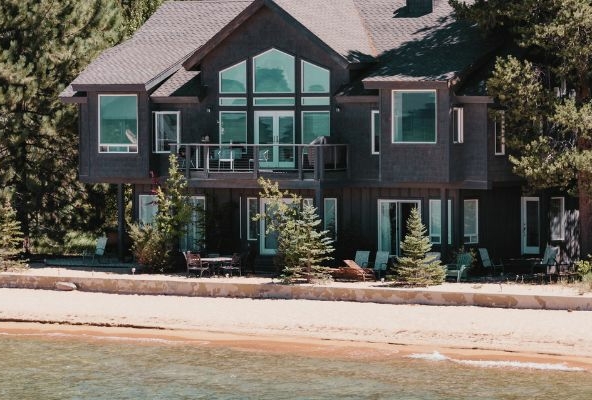The luxury real estate market has always been a magnet for high-net-worth individuals (HNWIs) seeking not only opulent living spaces but also smart investments that offer long-term value. However, over the last decade, significant shifts have been observed in how people invest in luxury properties, driven by evolving lifestyles, economic factors, and technological advancements. One of the most notable trends reshaping this sector is the rise of shared ownership, or co-ownership, of luxury real estate. This innovative model is gaining popularity globally as it provides access to high-end properties without the need for a full-time financial commitment.
In this article, we explore the global trends in luxury real estate, the emergence and growth of the co-ownership model, and how it is transforming the way people invest in premium properties.
The Global Luxury Real Estate Landscape
Luxury real estate has always been viewed as a stable and lucrative asset class, often appreciated for its resilience against market volatility and inflation. However, the global landscape of luxury property ownership is evolving, driven by several key trends:
1. Urbanization and Prime City Demand
One of the dominant trends in luxury real estate is the increasing demand for prime properties in urban centers. Cities like New York, London, Dubai, Paris, and Hong Kong continue to attract wealthy investors looking for exclusive properties in prime locations. The scarcity of land and prime real estate in these cities has driven prices up, making luxury homes in these locations an attractive investment for long-term appreciation.
The Knight Frank Wealth Report for 2023 highlights that ultra-prime properties in cities such as Los Angeles and Miami saw price increases of 13% to 19% in 2021 alone, underscoring the continued demand for luxury urban properties despite the global pandemic.
2. The Rise of Secondary Luxury Markets
While prime urban locations continue to dominate, there’s growing interest in secondary luxury markets. These include vacation hotspots like Tuscany, the French Riviera, the Caribbean, Goa and Bali, which offer both lifestyle benefits and investment potential. These markets have gained popularity as the demand for remote work-friendly destinations has surged. The pandemic accelerated this trend, as high-net-worth individuals sought properties that offer space, privacy, and proximity to nature.
Secondary luxury markets often provide more space and better value for money compared to crowded city centers, making them attractive for both full ownership and co-ownership models.
3. Sustainability and Eco-Friendly Luxury Homes
A growing trend among affluent buyers is the focus on sustainability and eco-friendly living. Luxury real estate developers are now incorporating environmentally friendly designs and technologies, such as solar energy, rainwater harvesting systems, and green roofs, to appeal to buyers who prioritize sustainability. The wellness real estate market, which focuses on health, sustainability, and eco-conscious living, is also on the rise, with the sector valued at $275 billion globally (source: Global Wellness Institute).
This trend is likely to continue as buyers increasingly look for properties that offer both luxury and environmental responsibility.
4. Technology and Smart Homes
The integration of cutting-edge technology in luxury real estate is another global trend shaping the market. Smart homes, featuring advanced automation systems, AI-powered home assistants, and state-of-the-art security systems, are in high demand among tech-savvy HNWIs. These homes not only offer enhanced convenience but also appeal to buyers looking for high-tech solutions to manage their properties remotely, especially in co-ownership scenarios where properties are shared.
The Emergence of Shared Ownership in Luxury Real Estate
As luxury real estate prices continue to rise, many investors are turning to shared ownership models to access prime properties without the financial burden of full ownership. Shared ownership, or co-ownership, allows multiple buyers to collectively own a fraction of a luxury property, typically through fractional ownership or timeshare models. Each co-owner enjoys part-time usage of the property and shares in the financial returns from rental income or eventual sale of the property.
How Co-Ownership Works
In a typical co-ownership arrangement, a property is divided into equal shares, and each buyer owns a fraction of the property, corresponding to their share. Ownership is often structured through a legal entity such as an LLC or special-purpose vehicle (SPV), which provides transparency and clarity on ownership rights, usage schedules, and exit strategies.
The co-ownership model allows buyers to:
- Access High-End Properties: Buyers can own a fraction of a luxury home in exclusive locations that would otherwise be unaffordable for full ownership.
- Reduce Maintenance and Upkeep Costs: Co-owners share the costs of property management, maintenance, and taxes, making luxury homeownership more affordable and hassle-free.
- Generate Rental Income: When not in use, luxury properties can be rented out, allowing co-owners to earn passive income.
- Enjoy Flexibility: Co-ownership offers flexibility in terms of property usage, often with a structured calendar or booking system, allowing owners to plan stays in advance.
Why Co-Ownership is Gaining Popularity
Several factors are driving the growing popularity of the co-ownership model in luxury real estate:
- Affordability and Accessibility: The rising cost of luxury real estate in prime markets has made full ownership increasingly challenging, even for high-net-worth individuals. Co-ownership makes luxury properties accessible to a broader range of buyers who may want to invest in multiple properties across different locations rather than tying up capital in a single property.
- Lifestyle and Flexibility: Many affluent buyers do not use their second homes year-round. Co-ownership allows them to enjoy the luxury of owning a vacation home without the financial burden of full ownership. It also offers the flexibility to co-own homes in multiple destinations, enabling a more diverse lifestyle.
- Remote Work and Changing Lifestyles: The rise of remote work has led to increased demand for properties in vacation destinations or serene environments. Co-ownership appeals to buyers who want the flexibility to work from different locations while enjoying luxury amenities.
- Technological Advancements: Technology has made it easier to manage shared ownership properties. With the rise of booking platforms and property management solutions, co-owners can seamlessly schedule property usage, track expenses, and communicate with other owners.
- Wealth Preservation and Tax Benefits: In some regions, co-ownership models offer tax advantages or allow owners to benefit from wealth preservation strategies. For example, in jurisdictions with favorable tax laws, co-owners may be able to defer capital gains taxes when selling their share of the property.
Global Examples of Co-Ownership Models
Several companies and platforms are pioneering the co-ownership model in luxury real estate, offering diverse ownership options to buyers:
- Pacaso: A U.S.-based startup that offers fractional ownership in luxury second homes. Pacaso purchases luxury homes, divides them into fractional shares, and sells them to buyers. Owners can use the home throughout the year and benefit from appreciation.
- Svazer: A co-ownership platform that allows buyers to co-own luxury second homes in prime global destinations. Svazer’s model also focuses on democratizing access to luxury properties while offering turnkey management services.
- ThirdHome: A luxury property exchange platform where owners of vacation homes can swap stays with other owners. This allows co-owners to access luxury properties in different locations without additional costs.
The Future of Co-Ownership in Luxury Real Estate
The co-ownership model is poised to play an increasingly significant role in the future of luxury real estate. As real estate prices continue to climb, and affluent buyers seek more flexible, diversified ownership options, shared ownership will likely become a preferred strategy for investing in luxury properties.
Fractional ownership, timeshare models, and co-living developments are expected to grow, providing buyers with more options for enjoying luxury real estate without the long-term financial commitment. Furthermore, advancements in blockchain and smart contracts could introduce greater transparency, security, and efficiency in managing co-ownership agreements.
Conclusion
The global luxury real estate market is experiencing a shift toward shared ownership as an innovative and accessible investment strategy. Co-ownership allows individuals to enjoy the benefits of luxury living while diversifying their portfolios and sharing the financial responsibilities of property ownership. As the trend continues to evolve, co-ownership is likely to become a mainstream option for investors seeking flexibility, financial returns, and lifestyle benefits from luxury real estate.




